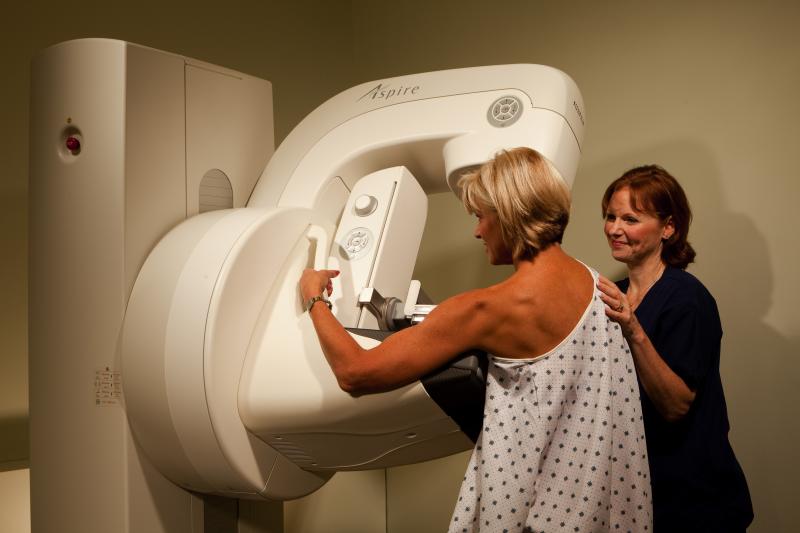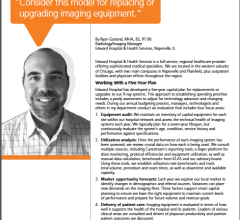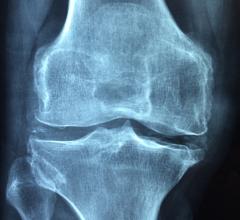Carestream Health announced that it has produced more than 1 billion square meters of its DryView Laser Imaging Film and other specialty films at its White City, Ore., facility — enough film to circle the Earth 70 times.
August 10, 2016 — Mobius Medical Systems highlighting even greater integration of its solutions at the 2016 AAPM meeting ...
August 10, 2016 — International medical imaging IT company Sectra announced it has been awarded a group purchasing ...
Radiology departments have many different needs and face a wide variety of challenges that can impact their departments ...
August 10, 2016 — Agfa HealthCare recently announced that University of Massachusetts Memorial Health Care (UMass ...
August 10, 2016 — Cincinnati Children's Hospital Medical Center and UC Health are celebrating the grand opening of the ...
July 27, 2016 — The U.S. Food and Drug Administration’s (FDA) Division of Mammography Quality Standards (DMQS) recently ...
Despite decades of progress in breast imaging, one challenge continues to test even the most skilled radiologists ...
There has been a lot of talk about "deconstructing" PACS. But what does this mean, and how could it affect the way you do business? This point/counterpoint takes a look at both sides of the debate. The Point argument is written by Tom Watson, Matt Adams and Cris Bennett of MD BuyLine, and is directly followed by the Counterpoint argument, written by Michael J. Cannavo, industry consultant.
Carestream featured its portfolio of innovative medical imaging and healthcare IT systems at the recent Association for Medical Imaging Management (AHRA) conference, July 31-Aug. 3 in Nashville.
August 9, 2016 — ViewRay Inc. announced highlights from the recent 2016 Annual Meeting of the American Association of ...
Bayer Radiology’s Barbara Ruhland and Thom Kinst discuss how radiology departments can address the many different ...
August 9, 2016 — Elekta announced that its high-field magnetic resonance linear accelerator (MR-linac) was featured in ...
This case study reviews how Edward Hospital & Health Services used a five-year capital plan to determine replacements and upgrades to imaging equipment. Learn how the disciplined approach helped them make better-informed decisions and realize a greater return on investments.
July 28, 2016 — Researchers at the Fraunhofer Institute for Medical Image Computing MEVIS in Bremen, Germany, are ...
eHealth Saskatchewan plays a vital role in providing IT services to patients, health care providers, and partners such ...
July 28, 2016 — Exact Imaging announced that The Journal of Urology has published the initial results supporting the ...
August 8, 2016 — An overview of the initial findings and results from the CT Lung Screening Protocol Challenge was ...
August 8, 2016 — Konica Minolta announced the release of its newest X-ray digital radiography (DR) system at the 2016 ...
August 8, 2016 — The U.S. Food and Drug Administration’s (FDA) National Mammography Quality Assurance Advisory Committee ...
Apollo Enterprise Imaging Corp announced that it has entered into a strategic agreement with Quest Diagnostics to provide a complete enterprise imaging and content management solution for use with ChartMaxx, an enterprise content management (ECM) solution from Quest Diagnostics. With the combined solution, hospitals and health systems that use ChartMaxx will be able to manage, retrieve and share a broader spectrum of clinical multimedia, images, documents and data within the ChartMaxx platform. Additional terms were not disclosed.
Mapping blood flow in the brain of athletes using an advanced form of ultrasound may make it easier to more accurately recognize concussions, according to a study released today that will be presented at the American Academy of Neurology's 68th Annual Meeting in Vancouver, Canada, in April.
A promising imaging technology that measures bone health at the microscopic level could help doctors detect osteoarthritis in its early stages and guide the development of new therapies, suggests preliminary research being presented at the 58th Annual Meeting of the American Association of Physicists in Medicine (AAPM).
CIVCO Medical Solutions, a provider of comprehensive motion management solutions for radiation oncology, exhibited its latest innovations and product offering to attendees of the American Association of Physicists in Medicine (AAPM) 58th Annual Meeting in Washington, D.C., in July.

 August 10, 2016
August 10, 2016 

















